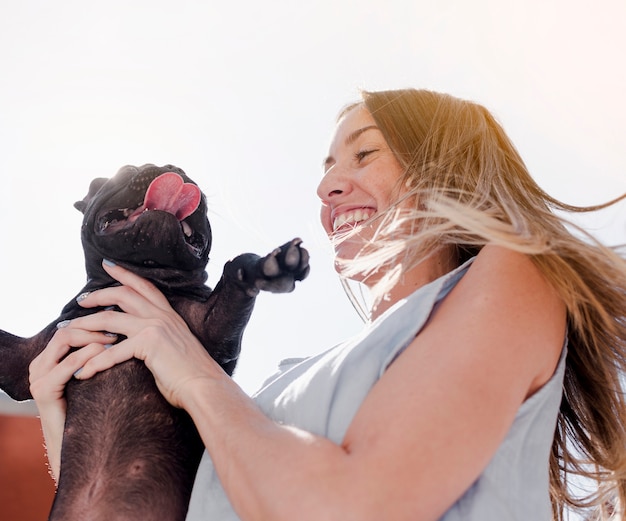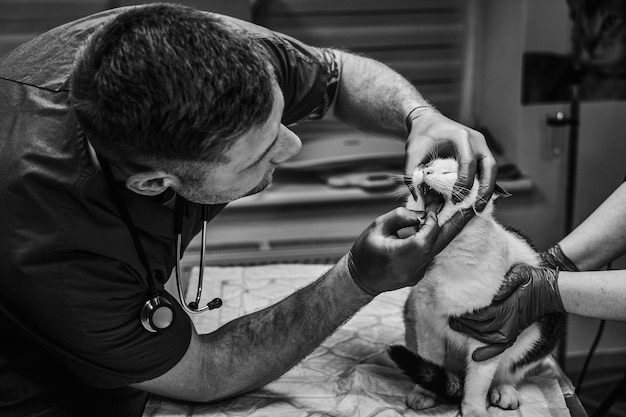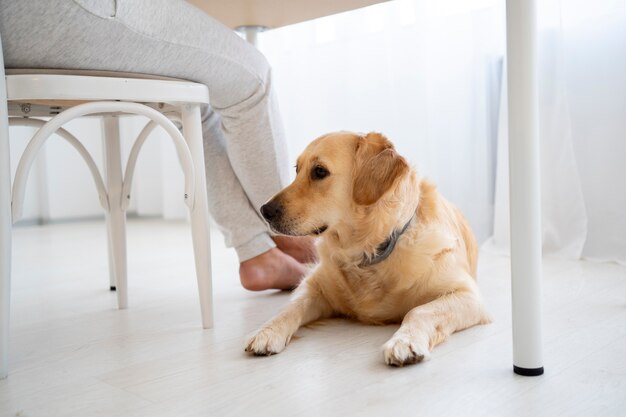Recognizing Heatstroke Symptoms in Pets in Taylors

Recognizing Heatstroke Symptoms in Pets in Taylors
When the summer heat rolls into Taylors and the humidity climbs, our beloved pets face a greater risk of heatstroke—an emergency that can turn a joyful day outdoors into a life-threatening crisis within minutes. At ReadyVets, we understand how quickly these situations develop, especially during the hottest August afternoons in Taylors and surrounding communities. If you are worried your dog or cat might be showing signs of distress after time in the sun, knowing the early heatstroke symptoms in pets could make all the difference.
In this guide, we will walk you through the most common heatstroke symptoms in pets, explain why heatstroke happens, outline what immediate steps to take at home, and clarify when to seek emergency care for pets. Our goal is to empower you to act fast—and confidently—if your pet is ever at risk. As an urgent-care clinic located at 5314 Wade Hampton Blvd Suite A, Taylors, South Carolina 29687, we offer walk-in exams and emergency services with extended hours, so you never have to wait for help if your pet’s health is in danger. Walk-ins are always welcome, no appointment is needed, and we are ready to assist when your regular veterinarian isn’t available. If you suspect a heat emergency, our emergency veterinary care is just minutes away.
Let’s explore how to recognize heatstroke symptoms in pets and what you can do to protect your furry family members during Taylors’ hottest months.
How to Recognize Heatstroke Symptoms in Pets
Key Signs and What to Watch For
Recognizing the early heatstroke symptoms in pets is essential for timely intervention. Dogs and cats do not sweat like humans; instead, they rely on panting and limited mechanisms to release excess heat. When their bodies can’t cool down fast enough, dangerous overheating occurs. The most common heatstroke symptoms in pets include excessive panting or rapid breathing, which may be accompanied by restlessness or agitation. You might notice drooling that is thicker or stickier than usual, as well as gums that appear bright red, bluish, or even pale.
Additional signs to watch for are increased heart rate, vomiting or diarrhea (sometimes with blood), weakness or unsteadiness when walking, and, in severe cases, collapse or seizures. Cats can show subtler symptoms, such as lethargy, open-mouth breathing, or hiding in cool, dark places. If your pet’s temperature rises above 104°F, or you observe any of these symptoms after being in the heat, immediate action is vital.
Pet owners in Taylors and surrounding communities should be especially alert during midday walks or any car rides, as even a few minutes in a warm vehicle can trigger a crisis. Recognizing these warning signs early enables you to get your pet the emergency care for pets they need without delay.
Why Immediate Recognition Matters
Heatstroke escalates rapidly, and every minute counts. Timely identification of heatstroke symptoms in pets often means the difference between a quick recovery and a life-threatening emergency. Pets with underlying health conditions, flat-faced breeds like Bulldogs or Persians, and young or elderly animals are especially vulnerable to the effects of high temperatures.
Why Heatstroke Happens: Understanding the Risks for Taylors Pets
The Science Behind Heatstroke
Heatstroke in pets occurs when their body temperature rises dangerously high, overwhelming their natural cooling mechanisms. Unlike humans, who can release heat through sweat across the skin, dogs and cats depend on panting and, to a lesser extent, sweating through their paw pads. High humidity in Taylors further limits their ability to cool down, raising the risk for heatstroke even when shaded or resting.
Contributing factors often include vigorous exercise during peak heat, lack of access to fresh water, confinement in unventilated spaces, or being left in parked vehicles. Asphalt, sand, or artificial turf can become extremely hot and burn paw pads, adding to the risk. Brachycephalic breeds—those with short, flat faces—struggle even more to regulate temperature, making them prime candidates for heat-related emergencies.
Local Climate and Seasonal Risks
August in Taylors is notorious for high temperatures and thick humidity. Even healthy, active pets can fall victim to heatstroke during a brisk walk or backyard play session. Owners should be mindful that the heat index, not just the thermometer reading, affects their pet’s risk. This means that on days when the air feels especially heavy, heatstroke symptoms in pets can develop with less exertion or exposure than you might expect.
How Emergency Vets Treat Heatstroke in Taylors
What Happens When You Bring Your Pet In
If your pet is showing heatstroke symptoms in pets, immediate veterinary attention is crucial. At ReadyVets, our veterinary team is trained to respond rapidly to heat-related emergencies. When you arrive at our clinic, your pet will be triaged upon entry—walk-ins are always welcome, and no appointment is required.
Treatment approaches involve quickly lowering your pet’s body temperature in a controlled manner. This often includes placing your pet on cooling mats, using fans, administering intravenous fluids, and, if necessary, delivering supplemental oxygen. Our full in-house diagnostic laboratory allows us to monitor organ function with blood tests, while digital radiology and ultrasound may help rule out other complications. In severe cases, your pet may require advanced interventions, such as blood and plasma transfusions or emergency surgery, to address organ damage or shock.
Throughout the process, our veterinary professionals will keep you informed, answer your questions, and tailor care to your pet’s unique needs. We understand how stressful these emergencies are and strive to provide compassionate, clear communication every step of the way.
What to Expect After Emergency Care
Following initial treatment, most pets require careful observation for several hours, sometimes longer. Your pet’s recovery may include ongoing monitoring for kidney, liver, or neurological complications. Our veterinary care services in Taylors are designed to support both immediate stabilization and follow-up care, ensuring your pet receives the attention they need to make a full recovery.
How to Prevent Heatstroke in Pets at Home
Steps to Keep Your Pets Safe
Prevention is always easier than treatment when it comes to heatstroke symptoms in pets. The most effective way to protect your dog or cat is to avoid exposure to high heat and humidity, especially during mid-day hours in Taylors. Provide access to shade at all times, ensure plenty of fresh, cool water is available, and bring pets indoors during the hottest parts of the day.
Exercise should be limited to early morning or late evening when temperatures are lower. Walk pets on grass rather than hot pavement, and never leave your animal in a parked car, even with the windows cracked. For brachycephalic breeds or senior pets, extra caution is warranted—short walks, cool environments, and constant supervision are key.
Pet owners can also help by brushing out excess fur, as matted coats trap heat. Consider providing cooling mats or vests for especially vulnerable animals. If you notice your pet becoming lethargic, panting excessively, or acting unlike themselves, move them to a cooler environment, offer water, and monitor their condition closely. For more details about general health checkups and how they can help identify risk factors, our pet physical examinations are available on a walk-in basis.
Seasonal Advice for Taylors and Surrounding Areas
In Taylors and nearby communities, summer brings unique challenges for pet safety. Community events, hiking trails, and backyard gatherings can all increase the risk of heat exposure. Planning ahead—such as packing extra water on outings, seeking shaded rest areas, and knowing where the nearest emergency vet is located—will help keep your pet safe year-round.
When to Seek Emergency Care for Heatstroke Symptoms in Pets
Warning Signs That Require Immediate Action
Any time you observe symptoms such as excessive panting, drooling, vomiting, staggering, or collapse in your pet during hot weather, it is time to act. Attempt to cool your pet by moving them to an air-conditioned space and offering small amounts of water, but do not delay in seeking professional help. Heatstroke can cause irreversible organ damage or even death if not treated swiftly.
Owners should also seek emergency care for pets if their animal’s temperature remains above 104°F, if they are unresponsive, or if seizures occur. The rule of thumb is simple: when in doubt, get help. Our clinic is open with extended hours, and immediate care is always available—you do not need to wait for an appointment, and walk-ins are welcome at ReadyVets.
How to Find an Emergency Vet Near You
In urgent situations, searching for an "emergency vet near me" is a common instinct. ReadyVets proudly serves Taylors and surrounding communities, providing emergency veterinary care at a centrally located clinic. If you are in need of quick, reliable support for heatstroke symptoms in pets, our team is prepared to help from the moment you walk in the door.
While some pet emergencies can be managed at home, heatstroke is not one of them. Rely on professional expertise to give your pet the best possible chance of recovery.
Take Action: Protect Your Pets from Heatstroke in Taylors
Summer in Taylors can be tough on our pets, but with vigilance and quick action, heatstroke is preventable and treatable. Remember to watch for warning signs, limit outdoor time during peak heat, and never hesitate to seek emergency care for pets if you suspect heatstroke. Our veterinary team at ReadyVets is committed to providing the highest level of urgent care when it matters most.
If you are worried your pet is overheating or showing heatstroke symptoms in pets, walk-ins are welcome at ReadyVets—no appointment needed. For immediate assistance, call (864) 920-2777 or visit our clinic at 5314 Wade Hampton Blvd Suite A, Taylors, South Carolina 29687. Searching for an emergency vet near me or urgent care vet near me will bring you to a local team dedicated to fast, compassionate care.
For more information about our emergency veterinary care or to learn about comprehensive support after an emergency, explore our veterinary care services. Your pet’s wellbeing is our highest priority, and we are always here to help—especially when every second counts.
This content is for informational purposes only and does not replace professional veterinary diagnosis or treatment. If you suspect your pet is experiencing heatstroke or any other emergency, seek veterinary care immediately.


















